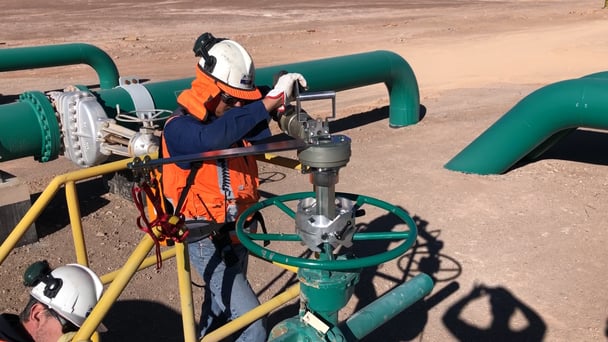19 March 2020
Valves maintenanceMaintenance of industrial equipment has become a vital point in all industries in all sectors.
Even the design of maintenance has considerably progressed Over the last few years preventive maintenance has proved to predominate over corrective maintenance. This prediction in terms of maintenance has led to the tools used becoming increasingly sophisticated.
Tasks carried out during shutdowns are the tasks that cannot be carried out when the production site is in operation.
How can your production downtime be reduced? What are the critical points in a stoppage for maintenance?
This phase aims at understanding the losses related to stoppages for maintenance. It is clear that maintenance aims at foreseeing and anticipating dysfunctions in the production plant.
Every machine, every motor, every valve has a service life and a maintenance programme determined by its manufacturer. It is important to comply with these recommendations for avoiding any damage to a system or even causing a plant shutdown. To do this, a preventive diagnosis action ensures that everything runs correctly.
Taking the example of the valves present in the plant, frequently checking that they open and close correctly provides a diagnosis on the efficiency of every valve, prevents leaks and any drops in flow-rates through pipes.

Tools exist that allow operations to be carried out rapidly and recurrently for collecting information and thereby drawing up a diagnosis. Preventing potential incidents generates a reduction in risks and, therefore in costs and maintenance times.
All these operations must be focussed on safety, cost reduction, and operational efficiency.
The planning stage is at the core of company strategy. It consists of defining the work to be carried out according to certain criteria and requirements.
A logistics plan must be drawn up for receiving, storing and protecting all the articles needed for the shutdown. Every task must be estimated in terms of cost and assessed in terms of risk and safety requirements. It is also during this stage that emergency procedures must be drawn up by preparing for what might happen in the worst possible scenario.
It is important to focus on reducing the length of the shutdown. To do this, it is preferable to draw up a shortlist of things to do for putting the accent solely on the tasks that can only be carried out when the plant is stopped. Irrespective of the level of detail of your project plan, unplanned works are inevitable. Not taking a certain amount of unplanned work into account may have an enormous negative impact on both the time-schedule and the budget.
Discussions often take place on the best tools to be used for managing stoppages. For major jobs, it is important to determine which is the right critical path applicable. For minor independent jobs, a simple spreadsheet can be used for determining the critical path.
Roles often change during maintenance ... an engineer may be entrusted with a role as quality representative. This is why it is important to plan for a selection of easy-to-use tools beforehand. Supervisors must be able to provide a rapid efficient explanation of the operations to be carried out.
The finality of the planning stage is to possess a general revised schedule with a cost estimate, systematically adding a margin on the budget to deal with unpleasant surprises.
The maintenance team handles inspection of all the items of equipment and implements corrective actions. Every item of equipment has a service life and a maintenance cycle determined by its manufacturer. Every modification, repair or replacement must be measured and a report must be issued. Every operation must be carried out in compliance with safety regulations. An accident is liable to delay the plant’s restart and generate very considerable financial losses.
Many accidents occur on work equipment during maintenance operations. Maintainability is not sufficiently taken into account in machine design. However, it contributes to improving maintenance operators’ health and safety, whilst optimizing the equipment’s production availability ratio at the same time.
At long last, modec valve actuators act on guaranteeing operators’ safety during industrial maintenance operations. This is all the more true, as, when valves are not motorized by fixed actuators, maintenance of a set of valves in a minimum amount of time can prove to be a risky, laborious task for operators.

Fast and safe maintenance operation carried out in a mine in Chile using a Modec portable valve actuator.
Irrespective of whether industrial maintenance is complete, predictive, preventive or curative, thanks to Modec valve actuators operators no longer need to perform long, arduous operations for maintaining and optimizing production tool performances.
Repetitive gestures related to opening and closing valves are almost non-existent and risks of accident or musculoskeletal problems are ruled out. As operators no longer need to force to operate valves or handwheels, tendinitis of the elbow or hip pain no longer exists because the force required is provided by the tool and no longer by the operator.
Furthermore, maintenance activities are well known for their highly variable nature: The variability of intervening parties, the variability of environments but also the variability of the element to be maintained (special or standard valves/handwheels, isolated or part of a set, installed undercover, in pits, above ground, etc.).
Thanks to their adapters, Modec valve actuators can be connected to any valve or handwheel, no matter whether it is flat or conical, and regardless of its diameter.

Once these different stages have all been carried out, it is time to analyse the situation.
What difficulties were encountered during maintenance? Was the time-schedule respected? The assessment enables a review to be made of the critical path and the main jobs. Lastly, we can now draw positive conclusions for planning the next maintenance operation. Coherence and repeatability are essential in managing the plant’s annual shutdown strategy at long term.
+ 33 (0) 4 75 40 27 15
sales@modec.fr
ZI Sirius Quatre
80, allée René Higonnet
26760 Beaumont-lès-Valence, FRANCE
185 Alewife Brook Parkway
#210
Cambridge, MA 02138, USA
11111 Katy Freeway suite
#910
Houston, TX 77079, USA
© Alle Rechte vorbehalten - modec - Verwirklichung : ARKOD